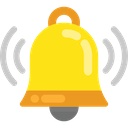-
 Hi Guest!
Hi Guest!
If you enjoy and benefit from your participation at British Car Forum, please consider supporting our efforts with a subscription.
There are some perks with a member upgrade!**Upgrade Now**
(PS: Subscribers don't see this banner)
Changing Brake Fluid & Brake Pressure Switch
- Thread starter PeterB
- Start date
Share this page
Similar threads
Similar threads
-
-
-
-
-
-
-
-
-
-
-
-
-
-
-
-
-
-
-
-
-
-
-
-
-
-
-
-
-
M
-
-
-
-
-
-
-
-
-
-
-
-
-
-
-
-
T
-
G
-
G
-
-
-


 smilie in place of the real @
smilie in place of the real @
 Pretty Please - add it to our Events forum(s) and add to the calendar! >>
Pretty Please - add it to our Events forum(s) and add to the calendar! >> 









